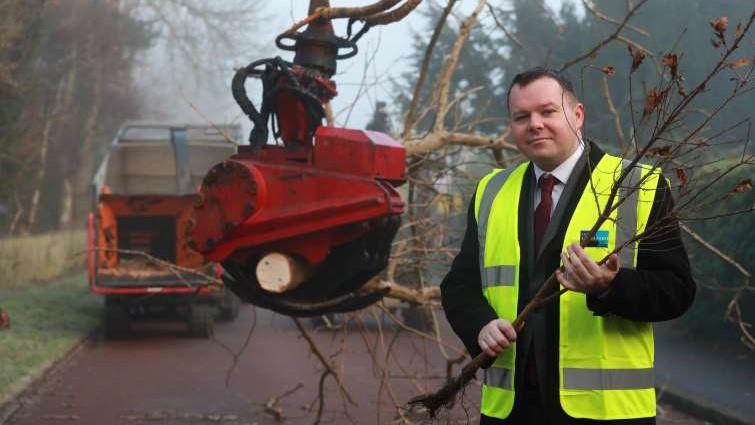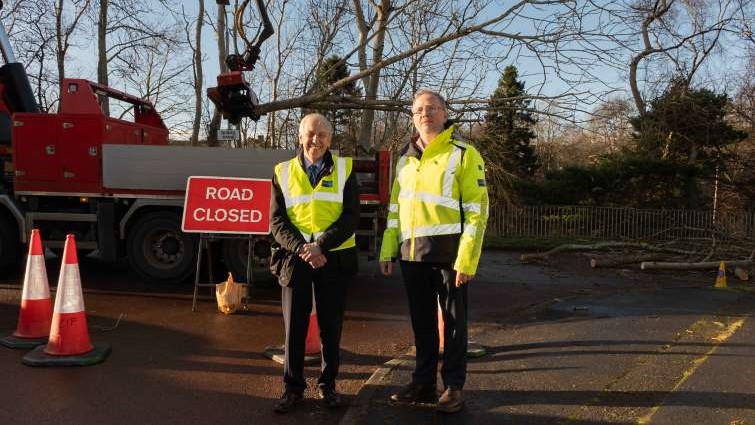Work underway to remove trees worst affected by ash die-back disease
Published: Thursday 13 February 2025

Work is now underway to safely remove the most dangerous trees affected by ash die-back disease.
Specialist equipment has been used to remove the affected ash trees from the embankment running alongside the East Kilbride Expressway.
The trees were cut down in sections so that no branches would fall on the carriageway or hit nearby properties on the Burns Park Road which runs alongside the expressway at the top of the embankment.
Councillor Leader Joe Fagan said: “A significant number of ash trees across the area will have to be removed over the next 20 years.
“The council is not only aware that this must take place to ensure the safety of the community but also the environmental impact if we do nothing about these dead and dying trees.
“I am delighted that our plan will see the safe removal of the worst affected trees first with the different types of trees being planted in the areas affected as much as possible.”
It is estimated that between 50% and 75% of ash trees on land the council manages or owns will be affected.
It has spread across much of the UK including South Lanarkshire, with only a small fraction of trees proving resistant.
The disease is the most significant to affect broadleaved trees in the UK since Dutch Elm Disease gained prominence in the 1960s.

Councillor Robert Brown, the chair of the council’s Community and Enterprise Resources Committee, added: “Ash Dieback Disease is a huge threat to our environment.
“Unfortunately, there is a significant number of affected ash trees growing alongside roads.
“This programme of works in East Kilbride is one of the first stages in removing potentially dangerous trees before they pose a risk to residents, road users and properties.
“Managing this problem quickly and effectively will go a long way to making sure that this pervasive disease is managed safely and the replanting programme will ensure over time that tree populations and canopy cover will return with as little impact to our ecosystems as possible.”
For more information please go to the Ash dieback disease webpage and the Ash Dieback Action Plan.
1 July 2025
Flying the flag for autism awareness
1 July 2025
Exceptional performance by schools across South Lanarkshire
30 June 2025
Upgrades on way for gyms and studios
30 June 2025
Parade to take place this weekend
27 June 2025
Larkhall targeted in rural roads clear up
27 June 2025
Improvements on way for road in Carluke
26 June 2025
Funding reinforces council teams battling against discarded gum
25 June 2025
New bid to help the homeless
24 June 2025
Flag raised to honour Armed Forces
23 June 2025
Digital switchover of community alarms nearing completion















